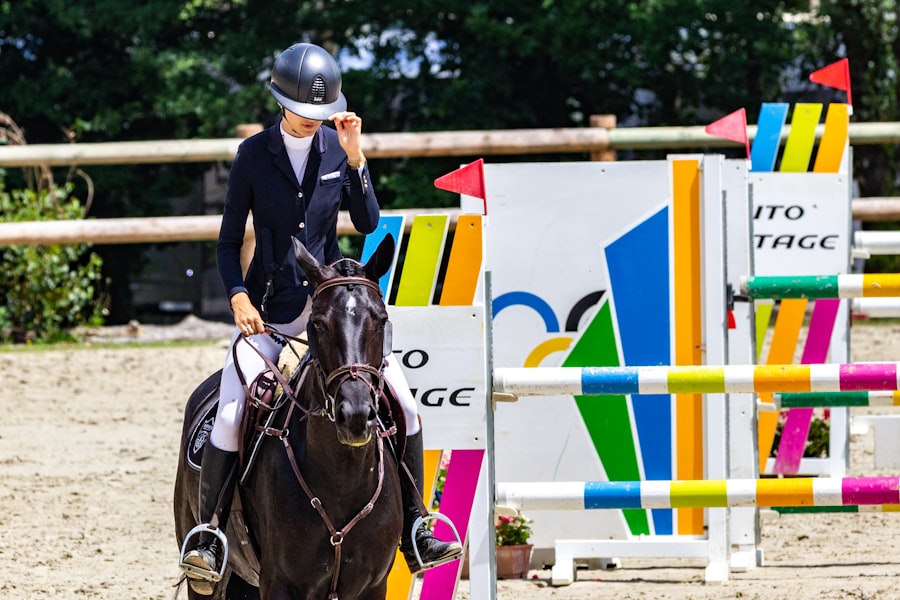Download links
How to install Mastering the Waves: The Thrill of Ph630 Surfing APK?
1. Tap the downloaded Mastering the Waves: The Thrill of Ph630 Surfing APK file.
2. Touch install.
3. Follow the steps on the screen.
Description
Ph630 surfing, a unique and exhilarating form of wave riding, has its roots deeply embedded in the rich tapestry of surfing culture in the Philippines. The term “Ph630” refers to a specific style or technique that has evolved over the years, influenced by both traditional Filipino water sports and modern surfing practices. The history of surfing in the Philippines can be traced back to the early 1970s when local surfers began to adopt techniques from international surfing communities.
The introduction of surfboards and the establishment of surf schools marked the beginning of a burgeoning surfing culture that would soon captivate both locals and tourists alike. As the sport gained popularity, various regions in the Philippines began to develop their own unique styles and techniques, leading to the emergence of Ph630 surfing. This style is characterized by its emphasis on fluidity and grace, often incorporating elements of traditional Filipino water sports such as paddling and maneuvering through waves.
The evolution of Ph630 surfing has been shaped by the natural geography of the Philippines, with its diverse coastlines and varying wave conditions providing an ideal environment for surfers to hone their skills. Over the decades, local competitions and surf festivals have further solidified the Philippines’ reputation as a premier surfing destination, attracting enthusiasts from around the globe.
Key Takeaways
- Ph630 surfing has a rich history in the Philippines, dating back to ancient times when it was a means of transportation and a way of life for coastal communities.
- Essential gear and equipment for Ph630 surfing include a surfboard, leash, wax, and proper swimwear to ensure a safe and enjoyable experience.
- Mastering the waves in Ph630 surfing requires techniques such as paddling, popping up, and reading the waves, along with tips for maintaining balance and control.
- Safety precautions for Ph630 surfing include knowing your limits, checking the weather and surf conditions, wearing a leash, and being aware of potential hazards in the water.
- The Philippines is home to some of the best Ph630 surfing spots, including Siargao, Baler, and La Union, offering a variety of waves for surfers of all levels.
- Ph630 surfing offers numerous health benefits, including improved cardiovascular fitness, muscle strength, and mental well-being, making it a popular and rewarding activity for enthusiasts.
The Essential Gear and Equipment for Ph630 Surfing
The Surfboard: A Surfer’s Best Friend
The most fundamental piece of equipment is, of course, the surfboard. Ph630 surfers typically favor boards that are lightweight yet durable, allowing for quick maneuverability on the waves. Shortboards are often preferred for their agility, while longboards may be chosen for their stability and ease of paddling. The choice of board largely depends on the surfer’s skill level and the type of waves they intend to ride.
Protective Gear: Wetsuits and Rash Guards
In addition to the surfboard, other essential gear includes a wetsuit or rash guard, which provides protection against the elements and minimizes the risk of sunburn. A well-fitted wetsuit is particularly important in cooler waters, while rash guards are ideal for warmer climates, offering UV protection without the bulk.
Accessories and Capturing the Moment
Furthermore, accessories such as surf leashes, wax for grip, and fins for stability are crucial components that enhance performance on the water. For those looking to capture their surfing experiences, waterproof cameras or action cams have become increasingly popular, allowing surfers to document their adventures and share them with a wider audience.
Techniques and Tips for Mastering the Waves

Mastering Ph630 surfing requires a combination of skill, practice, and an understanding of wave dynamics. One of the fundamental techniques is paddling efficiently. Surfers must learn to position themselves correctly on their boards to maximize speed and minimize drag.
This involves lying flat on the board with a slight arch in the back, using strong, rhythmic strokes to propel themselves toward incoming waves. Timing is crucial; surfers must gauge when to paddle hard to catch a wave while also being aware of their surroundings to avoid collisions with other surfers. Once a surfer has successfully caught a wave, transitioning into a standing position is key.
This involves a quick yet controlled movement from lying down to standing up, often referred to as “pop-up.” Practicing this motion on land can help build muscle memory before attempting it in the water. Additionally, maintaining balance while riding the wave is essential; surfers should keep their knees bent and their weight centered over the board. As they gain confidence, they can experiment with turns and tricks, gradually incorporating more advanced maneuvers into their repertoire.
Safety Precautions for Ph630 Surfing
| Precaution | Description |
|---|---|
| Check the weather | Ensure that the weather conditions are suitable for surfing and that there are no storms or strong winds. |
| Use a leash | Always attach a leash to your surfboard to prevent it from getting away from you in the water. |
| Know your limits | Be aware of your surfing abilities and do not attempt to surf in conditions that are beyond your skill level. |
| Respect other surfers | Follow the surfing etiquette and respect the right of way of other surfers in the water. |
| Protect your skin | Wear sunscreen and a rash guard to protect your skin from the sun and potential rashes. |
Safety is paramount in any water sport, and Ph630 surfing is no exception. Before hitting the waves, surfers should familiarize themselves with local conditions, including tide patterns, wave heights, and potential hazards such as rocks or strong currents. It is advisable to surf in designated areas where lifeguards are present or where other surfers are gathered, as this not only enhances safety but also provides opportunities for learning from more experienced individuals.
Wearing appropriate safety gear can significantly reduce the risk of injury. In addition to wetsuits or rash guards, surfers should consider using helmets or impact vests when attempting more challenging maneuvers or when surfing in crowded areas. Furthermore, understanding basic first aid can be invaluable in case of accidents or injuries.
Surfers should also be aware of their physical limits; overexertion can lead to fatigue and increase the likelihood of accidents. Staying hydrated and taking breaks when needed are essential practices for maintaining stamina during long surf sessions.
The Best Ph630 Surfing Spots in the Philippines
The Philippines boasts an array of stunning locations that are perfect for Ph630 surfing enthusiasts. One of the most renowned spots is Siargao Island, often referred to as the “Surfing Capital of the Philippines.” Cloud 9, located on this island, is famous for its powerful waves and consistent swells, attracting surfers from around the world. The vibrant surf culture here is complemented by numerous surf schools and local competitions that foster community engagement.
Another exceptional location is La Union, known for its picturesque beaches and welcoming atmosphere for both beginners and seasoned surfers. The surf breaks at San Juan offer a variety of wave conditions suitable for different skill levels. Additionally, Baler is celebrated for its historical significance in Philippine surfing; it was here that surfing was first introduced to the country in the 1970s.
The waves at Sabang Beach provide an excellent environment for learning and mastering Ph630 techniques while enjoying breathtaking coastal views.
The Health Benefits of Ph630 Surfing

Engaging in Ph630 surfing offers numerous health benefits that extend beyond mere enjoyment of the sport.
Balancing on a surfboard requires leg strength and stability, contributing to overall physical conditioning. Beyond physical health, surfing also promotes mental well-being. The rhythmic nature of riding waves can be meditative, allowing surfers to connect with nature and experience a sense of tranquility amidst the chaos of daily life.
The adrenaline rush associated with catching waves can boost mood and reduce stress levels, making it an effective outlet for managing anxiety and depression. Furthermore, being part of a vibrant surf community fosters social connections that can enhance emotional resilience and provide support networks among peers who share similar passions. In summary, Ph630 surfing is not just a sport; it embodies a lifestyle that celebrates adventure, community, and personal growth.
From its rich history rooted in Filipino culture to its essential gear and techniques, every aspect contributes to an enriching experience that resonates with both seasoned surfers and newcomers alike. As one navigates through the waves, they not only challenge themselves physically but also cultivate a deeper appreciation for nature’s beauty and power.
If you’re a fan of surfing, you may also be interested in checking out this article about a free PDF viewer for Android in 2021. This handy tool can help you access important documents on the go, making it easier to stay organized and informed while you’re out catching waves. You can read more about it here.
FAQs
What is surfing?
Surfing is a water sport in which a person rides a board on the crest of a wave, typically while standing up.
What equipment do I need for surfing?
The basic equipment for surfing includes a surfboard, leash, wetsuit (if surfing in cold water), and wax for the board.
What are the health benefits of surfing?
Surfing provides a full-body workout, improves cardiovascular fitness, enhances balance and coordination, and can also have mental health benefits due to the connection with nature and the ocean.
What are some popular surfing destinations?
Popular surfing destinations include Hawaii, California, Australia, Indonesia, Costa Rica, and Portugal, among others.
What are some safety tips for surfing?
Safety tips for surfing include always using a leash, being aware of rip currents, respecting other surfers in the water, and knowing your own skill level and the conditions of the surf.





